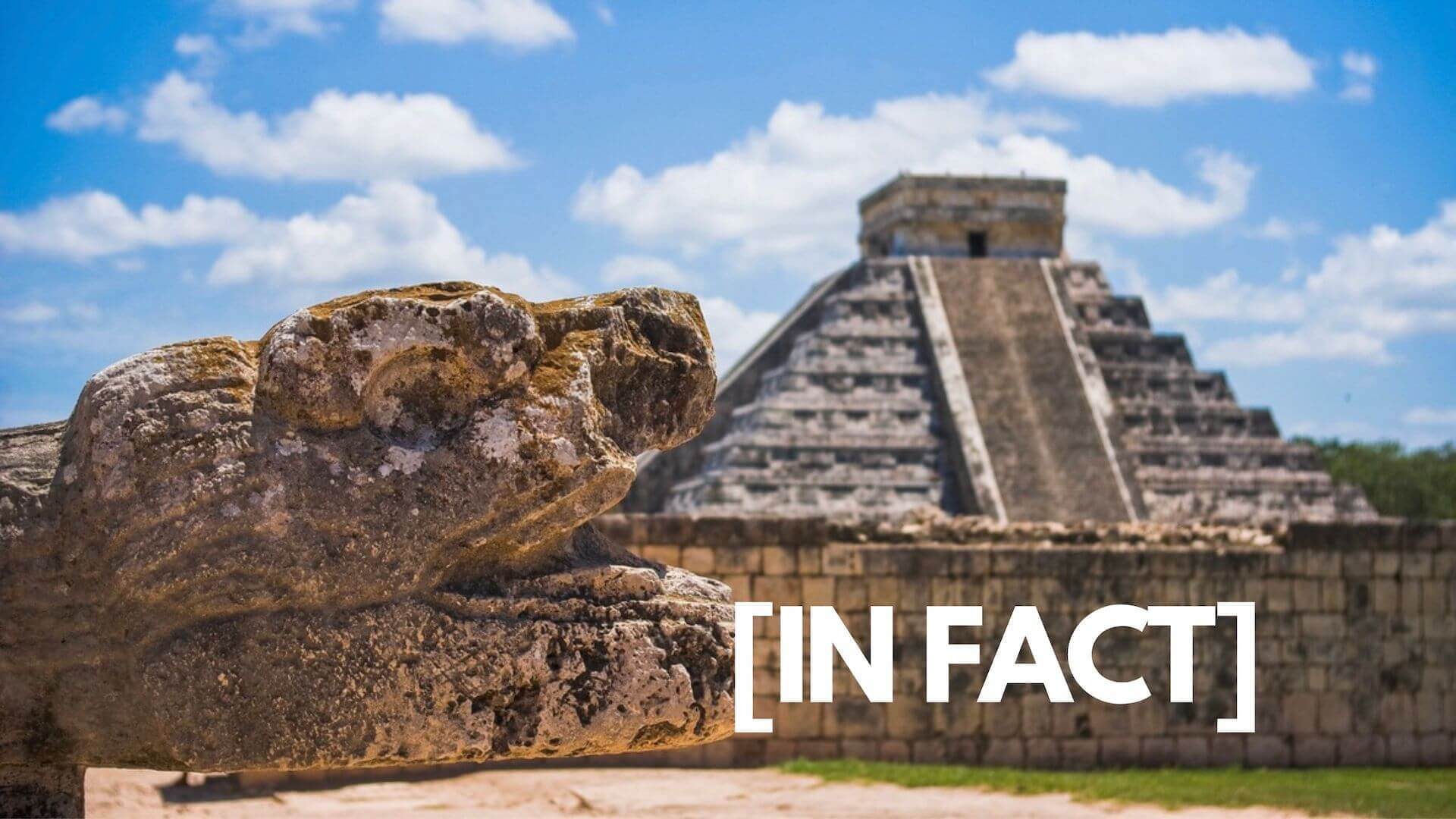
Chichen Itza: The Amazing Facts and History of the Maya’s Greatest City
Have you ever wondered what life was like in the ancient Maya civilization? How did they build such impressive monuments and cities? How did they use their knowledge of astronomy and mathematics to create accurate calendars and predict celestial events? If you are curious about these questions, you will love this article. In it, you will discover the fascinating facts and history of Chichen Itza, the most famous Maya ruin in the world. You will learn about its origin, development, decline, and legacy, as well as its stunning architecture, art, astronomy, and mathematics. You will also find out some interesting facts about Chichen Itza that you did not know and how to visit this incredible place with our exclusive tour offer.
What is Chichen Itza and Where is it Located?
Chichen Itza means “at the mouth of the well of the Itza” in Maya. It refers to the cenotes, or natural sinkholes, that were the main source of water and sacred places for the Maya. The Itza were a Maya ethnic group that migrated to the Yucatán Peninsula from the south and founded Chichen Itza around the 6th century AD.
Chichen Itza is located in the state of Yucatán, about 120 km east of Mérida, the capital city of Yucatán. It covers an area of about 5 km2 and has more than 200 buildings and monuments.

How to Visit Chichen Itza on Your Own
If you want to visit Chichen Itza on your own, without joining a tour group or hiring a guide, you have several options to get there. You can either rent a car, take a public bus, or stay in a nearby town. Each option has its advantages and disadvantages, depending on your budget, time, and preferences. Here are some details and tips for each option:
1. Renting a Car
This is a convenient and flexible way to get to Chichen Itza because you can drive at your own pace and stop at other places along the way. You can rent a car from Cancun, Playa del Carmen, Tulum, or Merida, and follow highway 180 to get to Chichen Itza. The drive takes about 2 to 3 hours, depending on your starting point and traffic conditions. You can also use Google Maps or a GPS device to guide you. Parking at Chichen Itza costs $80 MXN (about $4 USD).
However, renting a car also has some drawbacks, such as the cost of gas, tolls, and insurance. You also need to be careful with the road conditions and the local driving rules.
You can compare prices and easily book your car rental online with Discover Cars.
2. Taking the Bus
This is a cheap and easy way to get to Chichen Itza because you don’t have to worry about driving or parking. You can take the ADO bus from Cancun, Playa del Carmen, Tulum, or Merida. Then, you get off at the Chichen Itza bus station, which is about 10 minutes walk from the entrance. The bus ride takes about 3 to 4 hours, depending on your starting point and the number of stops. The bus fare ranges from $100 MXN to $300 MXN (about $5 USD to $15 USD) one way. You can check the bus schedule and buy your tickets online with ADO or at the bus station.
Nevertheless, taking the bus also has some limitations. For example, the fixed departure and return times, the lack of comfort and amenities on board, and the possibility of delays or cancellations.
3. Staying in a Nearby Town
This is, indeed, a good option if you want to spend more time exploring Chichen Itza and avoid crowds. You can stay in one of the towns near Chichen Itza, such as Valladolid, Piste, or Ek Balam. Then, you can take a taxi or a colectivo (shared van) to get to Chichen Itza in the morning. The taxi or colectivo ride takes about 20 to 30 minutes and costs about $50 MXN to $100 MXN (about $2.5 USD to $5 USD) per person one way. Additionally, you can rent a bike or a scooter in some of these towns and ride to Chichen Itza in about an hour. Especially, staying in a nearby town allows you to enjoy the local culture, cuisine, and attractions of these places. You can find affordable accommodation options with HostelWorld or Booking.com.
The History of Chichen Itza: From Rise to Fall
Chichen Itza had a long and complex history that spanned over a thousand years. It went through several phases of construction, expansion, invasion, alliance, and decline. Here are some of the main historical events and periods that shaped the city:
The Puuc Phase (600-900 AD)
This was the first phase of Chichen Itza’s development when it was influenced by the Puuc architectural style that originated in the nearby hills. The Puuc style is characterized by elaborate stone mosaics, geometric patterns, and ornate facades. Some examples of Puuc buildings in Chichen Itza are the Nunnery Complex, the Church, and the Akab Dzib.
The Toltec Invasion (900-1000 AD)
Around the 10th century AD, the Toltecs, a powerful civilization from central Mexico, invaded Chichen Itza. The Toltecs brought their culture, religion, art, and architecture to Chichen Itza, creating a fusion of Maya and Toltec styles. The Toltecs introduced new elements such as feathered serpents, warriors, eagles, jaguars, skulls, and human sacrifice. Some examples of Toltec buildings in Chichen Itza are the Temple of Kukulkan (also known as El Castillo), the Ball Court, the Temple of the Warriors, and the Tzompantli (or Skull Platform).
The Itzá Migration (1000-1200 AD)
Around the 11th or 12th century AD, a group of Maya people called the Itzá left Chichen Itza and migrated to Lake Petén Itzá in present-day Guatemala. There they founded another city called Tayasal (also known as Noh Petén or Flores). The reasons for this migration are unclear. Yet, some scholars suggest that it was due to political instability, drought, or overpopulation.
The League of Mayapán (1200-1450 AD)
After the departure of the Itzá, Chichen Itza became part of a confederation of Maya cities called the League of Mayapán. This league was formed to resist external threats from other groups such as the Xiu or the Cocom. The league was dominated by Mayapán, a city located about 100 km south of Chichen Itza. However, internal conflicts and rebellions eventually led to the collapse of the league and the destruction of Mayapán around 1450 AD.
The Spanish Conquest (1526-1542 AD)
In 1526 AD, Francisco de Montejo arrived in Yucatán with a Spanish expedition to conquer the region for Spain. He encountered fierce resistance from the Maya people who defended their lands and culture. Afterward, he tried to establish a settlement near Chichen Itza but failed due to attacks from the Xiu. He then moved to Campeche and later to Mérida.
In 1542 AD, his son Francisco de Montejo Jr finally conquered Chichen Itza with the help of the Xiu, who became allies with the Spanish. The Spanish imposed their religion, language, and laws on the Maya. Consequently, Chichen Itza was gradually abandoned and forgotten.
The Architecture and Art of Chichen Itza: A Blend of Maya and Toltec Styles
Chichen Itza is a remarkable example of the architectural and artistic diversity and richness of the Maya civilization. It combines elements from different styles, periods, and cultures, creating a unique and harmonious ensemble. Some of the main buildings and monuments that you can admire in Chichen Itza are:
The Temple of Kukulkan (El Castillo)
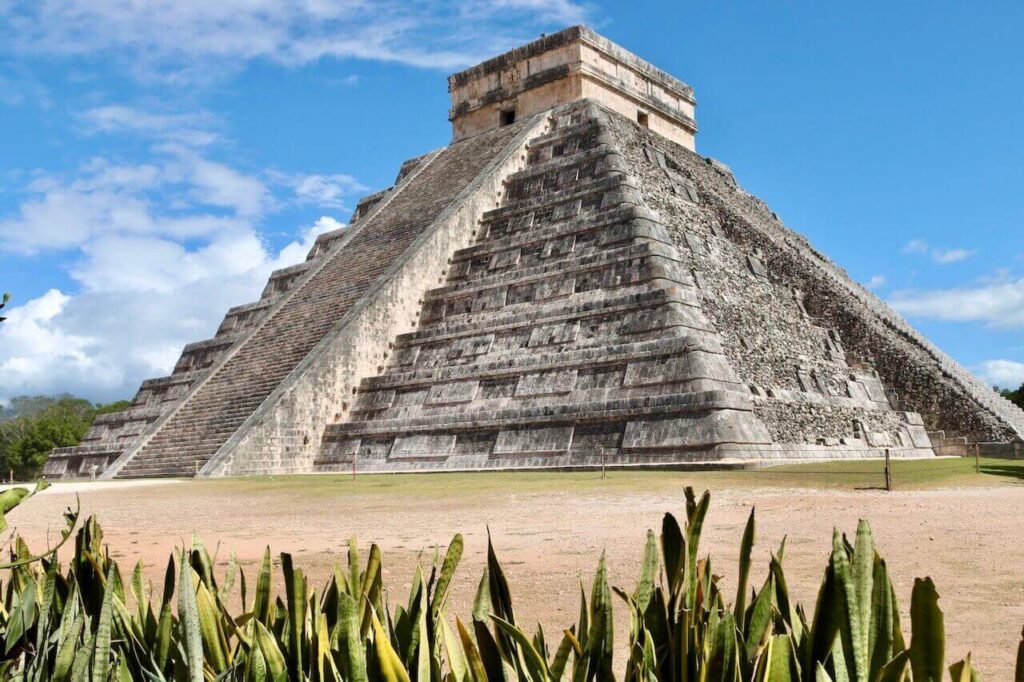
In fact, this is the most iconic and impressive structure in Chichen Itza. It is a four-sided pyramid that rises 30 meters high and has 365 steps, one for each day of the year. Each side has 91 steps, and the top platform makes the 365th. The pyramid is dedicated to Kukulkan, the feathered serpent god of the Maya and the Toltecs.
Especially, the Temple of Kukulkan serves as a giant calendar and an astronomical observatory. Twice a year, on the spring and autumn equinoxes, a shadow falls on the pyramid in the shape of a serpent. As the sun sets, this shadowy snake descends the steps to join a stone serpent head at the base of the staircase. This phenomenon demonstrates the accuracy and importance of Maya astronomy.
The Ball Court
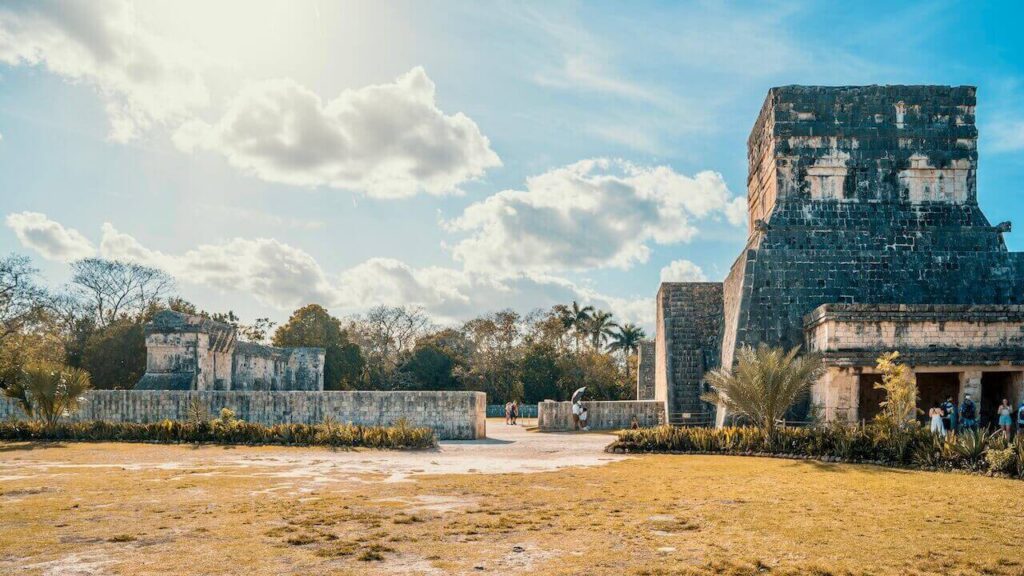

This is the largest ball court in Mesoamerica, measuring 166 by 68 meters. It is where the Maya played a ritual game called pok-ta-pok, which involved hitting a rubber ball with their hips, elbows, or knees through a stone ring on the wall. The game had religious and political significance because it represented the cosmic struggle between life and death, light and darkness, and order and chaos. The winners were honored and rewarded, while the losers were often sacrificed to the gods. The walls of the ball court are decorated with reliefs depicting scenes from the game and its consequences.
The Temple of the Warriors
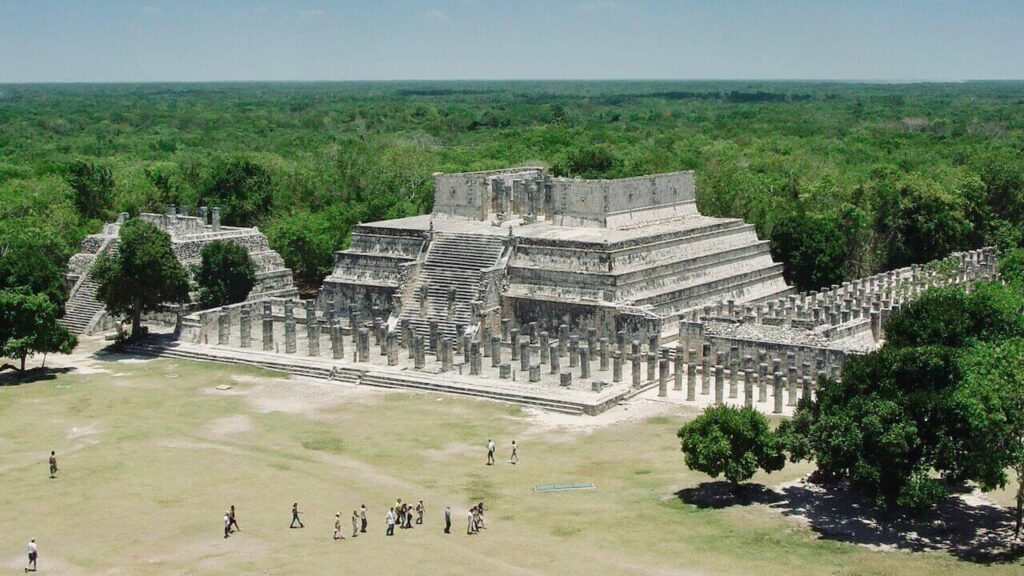
This is a large complex that consists of a stepped pyramid with a temple on top, surrounded by rows of carved columns depicting warriors and jaguars. In particular, the temple has a chac-mool statue at the entrance, which is a reclining figure holding a bowl or a plate on its stomach. The Mayan used chac-mool to offer sacrifices or gifts to the gods. Besides that, the temple has a mural depicting a battle scene between the Maya and their enemies.
The Sacred Cenote
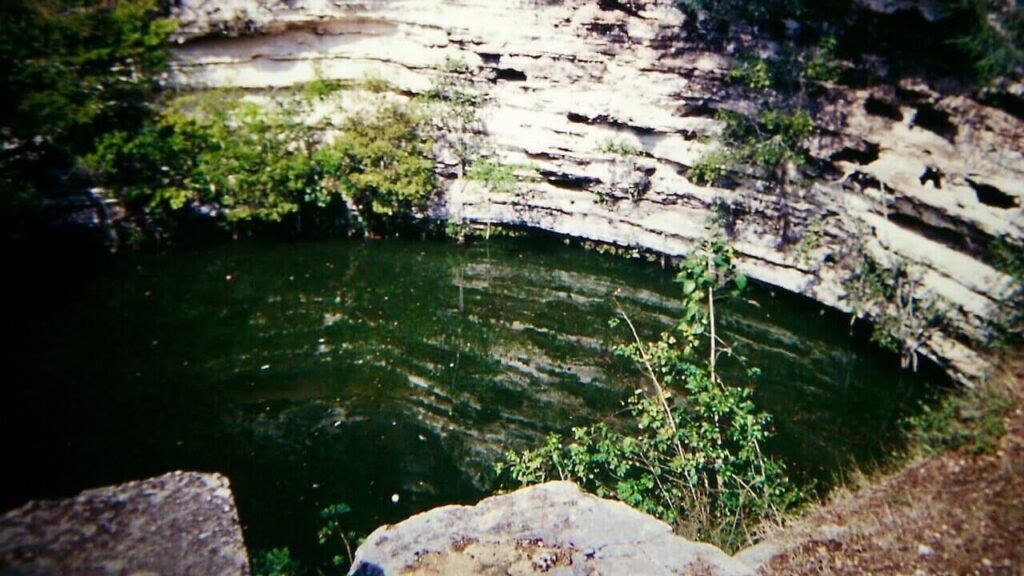
This is a natural sinkhole that measures 60 meters in diameter and 22 meters deep. It was a sacred place for the Maya because they believed it was a portal to the underworld or Xibalba. Indeed, they used it to perform rituals and ceremonies to appease the rain god Chaac and other deities. They also threw offerings into the cenote, such as jade, gold, pottery, textiles, and human beings. Many skeletons have been found at the bottom of the cenote, some of them showing signs of violence or mutilation.
The Platform of the Eagles and the Jaguars

A low platform that has four staircases with serpent heads at the base and four panels with images of Kukulkan holding a spear thrower and a shield. It also has four corner pillars with depictions of eagles eating human hearts. The Mayan used the platform for rituals and offerings to Venus and Kukulkan. The eagles and jaguars symbolize the warrior elite and the military orders of the Maya and the Toltecs. The figures of jaguars and eagles devouring hearts represent the warriors who were responsible for obtaining victims to sacrifice for the gods.
The Tzompantli (Skull Platform)

A platform that has rows of carved skulls on all four sides. The skulls represent the heads of the enemies or the victims that were killed in war or sacrificed to the gods. The platform was a display of fear and intimidation to the rivals and a tribute to the gods of death and the underworld. Moreover, the skulls served as a record of the number and origin of the captives. Even, some of the skulls have inscriptions that indicate their names, dates, and places of origin.
The Astronomy and Mathematics of Chichen Itza: A Legacy of Knowledge
Chichen Itza was not only a city but also a center of learning and innovation for the Maya. They developed advanced knowledge and skills in astronomy and mathematics that allowed them to create accurate calendars, predict eclipses, align buildings with celestial events, measure time and space, and perform complex calculations. Some of their astronomical and mathematical achievements are:
The Maya Calendar
The Maya used several calendars for different purposes, such as religious ceremonies, agricultural cycles, historical records, etc. The most important ones were the Tzolkin (or sacred calendar) and the Haab (or solar calendar).
- The Tzolkin had 260 days divided into 20 periods of 13 days each. Each day had a name and a symbol associated with a god or an animal.
- The Haab had 365 days divided into 18 months of 20 days each plus an extra period of five days called Wayeb. Each month had a name and a glyph related to nature or agriculture.
The Tzolkin and the Haab were synchronized every 52 years in an event called the Calendar Round.
The Long Count
This was another calendar that the Maya used to record historical dates and events. It was based on counting days from a fixed starting point that corresponds to August 11th, 3114 BC in our calendar. The Long Count had five units of time: k’in (day), winal (month), tun (year), katun (20 years), and baktun (400 years). A date in the Long Count was written as a series of numbers separated by dots. For example, the date December 21st, 2012 was written as 13.0.0.0.0 in the Long Count.
The Venus Cycle
The Maya were very interested in the movements of Venus, the brightest planet in the sky. They observed and recorded its appearances and disappearances as the morning and evening stars. Additionally, they calculated its synodic period, which is the time it takes for Venus to return to the same position relative to the sun. They found that this period was 584 days, which is very close to the actual value of 583.92 days. The Maya used this period to create a calendar for Venus that had 65 cycles of 584 days each, totaling 37,960 days or 104 years. This calendar was synchronized with the Calendar Round and the Long Count.
The Number System
The Maya used a vigesimal or base-20 number system, which means that they used 20 as the base or radix of their numeration. They also used a positional system, which means that the value of a digit depended on its position in the number.
They used three symbols to represent their digits: a dot for one, a bar for five, and a shell for zero. For example, the number 19 was written as four dots over three bars, and the number 20 was written as a shell in the first position and a dot in the second position.
They also used a vertical line to separate powers of 20, such as units, twenties, four hundreds, eight thousands, etc. For example, the number 8,421 was written as two dots over one bar in the fourth position, one dot in the third position, one bar in the second position, and one dot in the first position.
20 Interesting Facts About Chichen Itza
Chichen Itza and the Maya Calendar
1. Chichen Itza is one of the New Seven Wonders of the World and a UNESCO World Heritage Site.
2. The Temple of Kukulkan (El Castillo) is a pyramid that has 365 steps and serves as a calendar and an observatory.
3. On the equinoxes, a shadowy snake descends the pyramid to join a stone serpent head at the base.
4. The platform of Venus is dedicated to the planet and its god Kukulkan. It has a calendar that synchronizes with the Calendar Round and the Long Count.
5. The Maya calendar had several cycles and units of time, such as the Tzolkin, the Haab, and the Long Count.
6. The Maya also used a number system that was based on 20 and had symbols for zero, one, and five. They wrote their numbers vertically and used dots, bars, and shells to represent them.
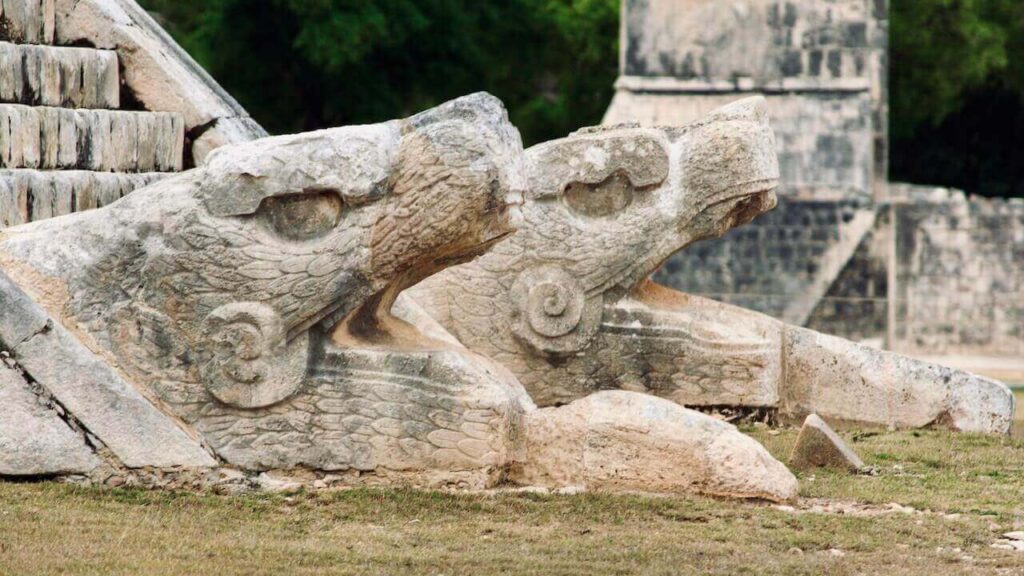
Chichen Itza and Human Sacrifice
7. The Ball Court is where the Maya played a game that involved hitting a ball through a ring. The losers were often sacrificed to the gods.
8. The Sacred Cenote is a sinkhole that was used for rituals and offerings. Many skeletons and objects have been found at the bottom.
9. The Temple of the Warriors has a chac-mool statue that was used for sacrifices or gifts to the gods. It also has a mural of a battle scene.
10. The Platform of the Eagles and the Jaguars has eagles and jaguars eating human hearts. They symbolized the warrior elite and the military orders.
11. The Tzompantli (Skull Platform) has carved skulls that represented the enemies or the victims that were killed or sacrificed.
12. The Maya believed that human sacrifice was necessary to maintain the balance of the cosmos and to please their gods. They preferred to sacrifice captives from other cities or regions, especially those who were young, healthy, beautiful, or noble. They used various methods of killing their victims, such as decapitation, heart extraction, drowning, burning, or throwing them into cenotes.
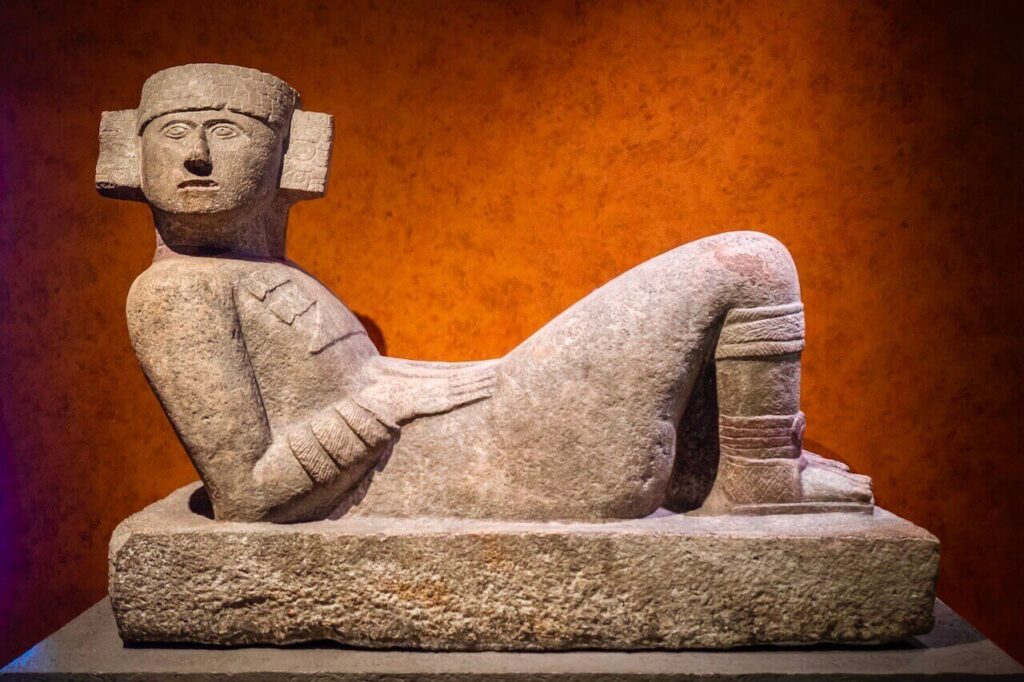
Chichen Itza and Sound Acoustics
13. Chichen Itza has sound effects that resemble the snake and the quetzal. If you clap near the Kukulkan Pyramid, you will hear the quetzal’s song.
14. If you whisper at one end of the Ball Court, you will be heard at the other end, 135 meters away. This was used for communication or ceremonies.
15. If you clap in front of the Temple of the Warriors, you will hear a rattlesnake sound. This was caused by the sound waves hitting the carved columns.
Chichen Itza and Hidden Secrets
16. Chichen Itza has a hidden chamber inside the Kukulkan Pyramid that contains a smaller pyramid. It was discovered in 2015 by using an advanced technique.
17. The Ossuary has a cenote underneath and a hidden chamber with skeletons and offerings. It was used for ancestral worship or royal burial.
18. The Red House has glyphs that record historical dates and events, such as the arrival of Kukulkan, the ruler of Chichen Itza.
19. The Mercado is an open area that was used as a marketplace or a meeting point. It has an arch that marks one of the entrances to the city.
20. Chichen Itza also has many other buildings and monuments that are not open to the public or have not been fully explored or restored. Some of them are:
– The Nunnery Complex (Las Monjas), has several structures with different architectural styles, such as Puuc, Chenes, and Maya.
– The Observatory (El Caracol), which was used by the Maya as an astronomical observatory to study.
Why Chichen Itza is a Must-See Destination for Everyone
Chichen Itza is a remarkable place that showcases the brilliance and mystery of the Maya civilization. If you ever have the chance to visit this UNESCO World Heritage Site, don’t miss it. Surely, you will be amazed by the beauty, facts, and history of Chichen Itza.
You will see the majestic Temple of Kukulkan, the largest ball court in Mesoamerica, the impressive Temple of the Warriors, the sacred cenote where human sacrifices were performed, and many other wonders. Furthermore, you will witness the amazing astronomical and mathematical achievements of the Maya, such as the equinox serpent shadow, the 365-step pyramid, the accurate calendars, and the complex number system. You will also learn some fun and surprising facts about Chichen Itza that will impress your friends and family. For example, did you know that Chichen Itza also features various strange sound acoustics that resemble the sounds of the snake and the Mexican quetzal? Or that Chichen Itza was named one of the New Seven Wonders of the World in 2007?
I hope you enjoyed reading this article and learned something new from Chichen Itza facts and history. It is truly a must-see destination for everyone who loves history, culture, and adventure. If you have any questions or comments, please feel free to share them with me. I would love to hear from you.
Visit Chichen Itza with the Best Tours
If you are fascinated by Chichen Itza and want to see it for yourself, there are tours that give you the best experience and make your trip unforgettable. You will enjoy comfortable transportation, a knowledgeable guide, a delicious lunch, and a visit to a nearby cenote. You will also have the opportunity to take amazing photos. Moreover, you will learn more about the history, culture, and science of the Maya civilization. Don’t miss this chance to experience one of the New Seven Wonders of the World with the best tours. Click below to see the available tours and prices and choose the one that suits you best. Book your tour today and get ready for an incredible adventure in Chichen Itza.
Note:
This post contains affiliate links from which I can earn commissions if you use services or buy products from the blog’s partners. If you love the blog, please use the services or buy the products. In that way, you give me support for the blog’s maintenance and development. I appreciate it a lot and thank you for that!
IF YOU LIKE THE INTERESTING CHICHEN ITZA FACTS AND HISTORY, ‘PIN IT’ NOW

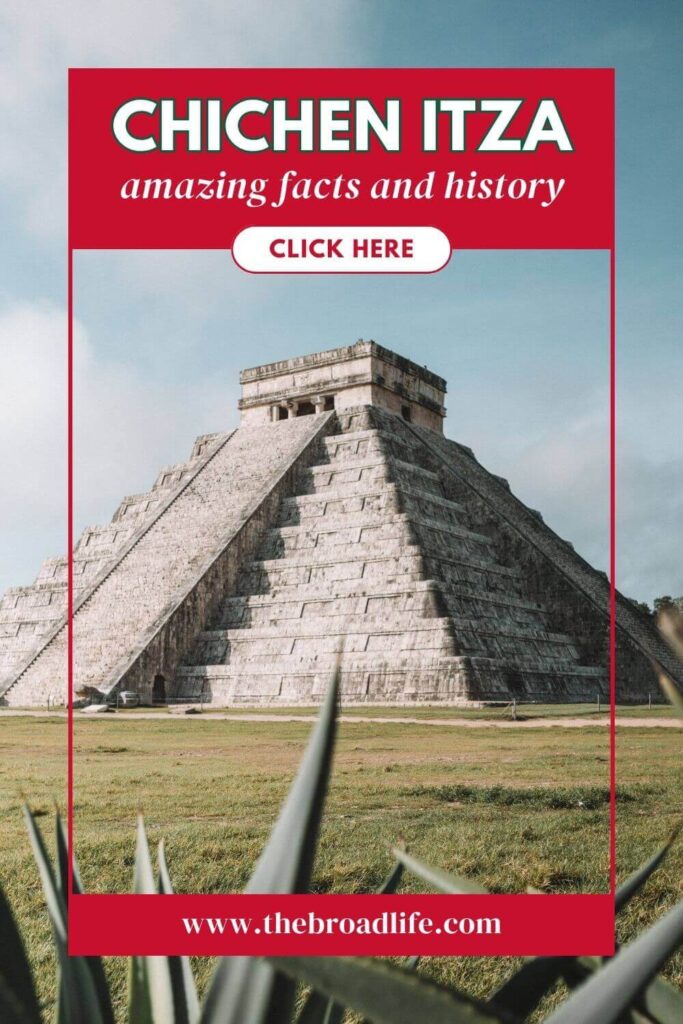
26 Comments
-
-
Julie
This is a roadmap for discovering the wonders of Chichen Itza. The historical journey you take us on, from the Puuc Phase to the Toltec Invasion and beyond, is like a thrilling narrative that makes the past come alive. And who could resist being captivated by the architecture? The Temple of Kukulkan, the Ball Court, the Temple of the Warriors – you’ve given each structure a spotlight, making them more than just buildings; they’re windows into a fascinating world.
-
Richard Lowe
When I was younger, I was fascinated by the Incas and Mayans. I read everything I could find. ThanK YOU for the information.
-
Rosey
So many great photos. it’s hard to not want to start planning a trip immediately after seeing them.
-
Sonia Seivwright
What you’ve provided about Chichen Itza’s history and its layout has piqued my interest much. Reading about how it evolved and how various cultures shaped it is fascinating. Travellers will appreciate how easy it is to get there thanks to the information you’ve provided here. Thank you for providing such a fascinating look into Chichen Itza’s history and current state; this is an invaluable resource for future tourists. 🏛️🌞🗺️
-
LisaLisa
WOW, what a great informative post! I’m loving the images and the history of Chichen Itza’s is so impressive. I have always been fancianated about how those cities were built.
-
Monidipa
Your exploration of Chichen Itza’s history is captivating! The incredible facts and insights you’ve shared bring this ancient city to life. Your enthusiasm for the Maya civilization shines through, making this historical journey a truly engaging read.
-
Marysa
We went to Chichen Itza on our honeymoon in 2004, and got to climb the main pyramid, which is now closed. It is definitely a great place to see in person, so rich in culture and history.
-
Alita
wow. I just discovered so many interesting facts about Chichen Itza through your post that I was quite surprised. And honestly, some of these amazing things about Chichen Itza kept me gaping.
-
Jennifer Prince
So silly, but I was totally like — khoi is doing recipes now!? I read it as chicken. Ha! I stand corrected. Anyway, the Mayans have always fascinated me, and I’d love to see these structures in person. They’re really intriguing!
-
Ntensibe Edgar
Ooohhh….chitchen itza is truly remarkable. it so much reminds of the azteca way of life, i always read about in school. it would be an honour to visit.
-
Zab Zaria
I can just imagine how much fun the whole family would have visiting this place! Thanks for sharing
-
Fransic verso
Wow, it looks amazing, never been to this place before but would love to go there. Thank you for sharing about it.


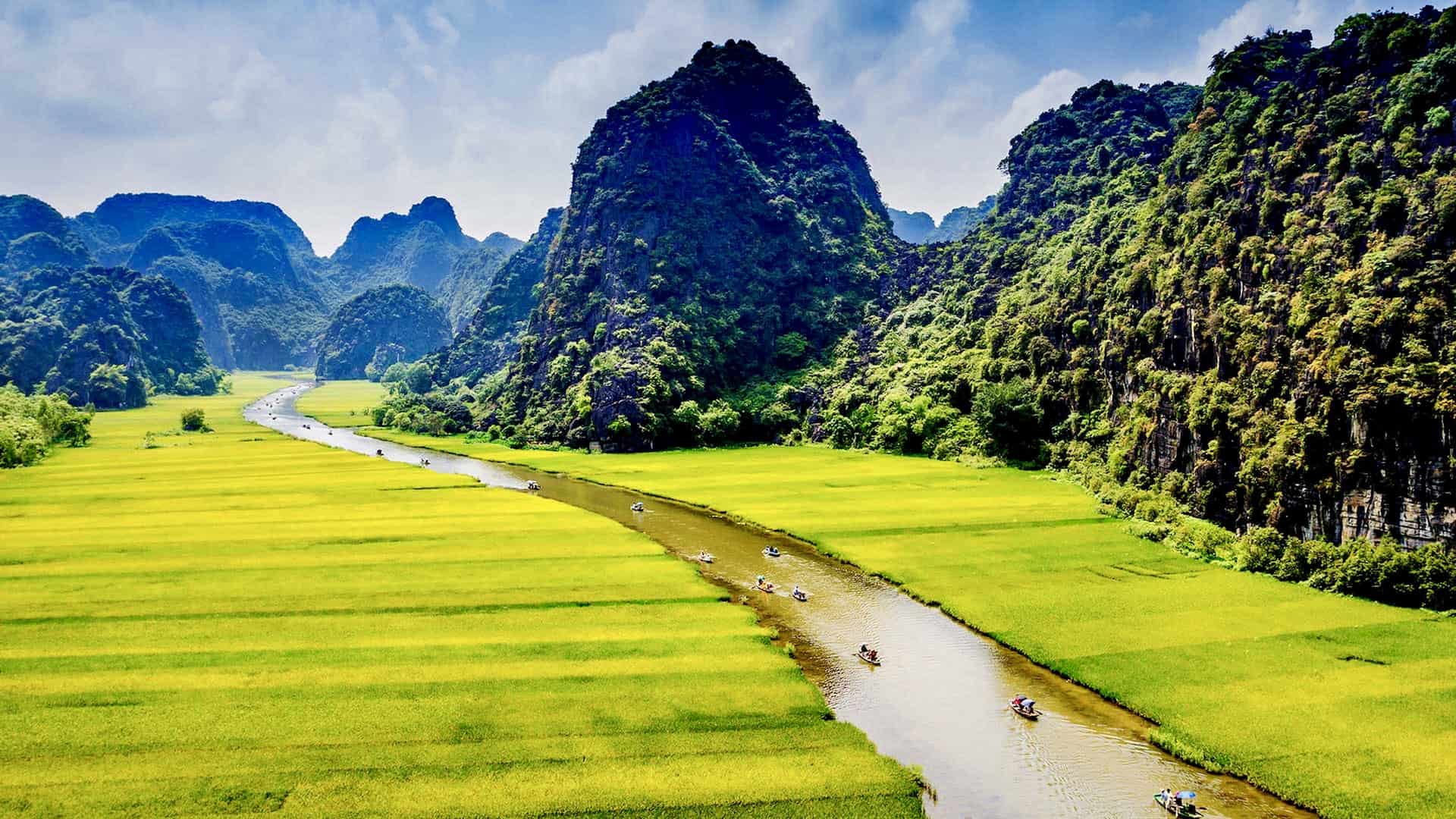
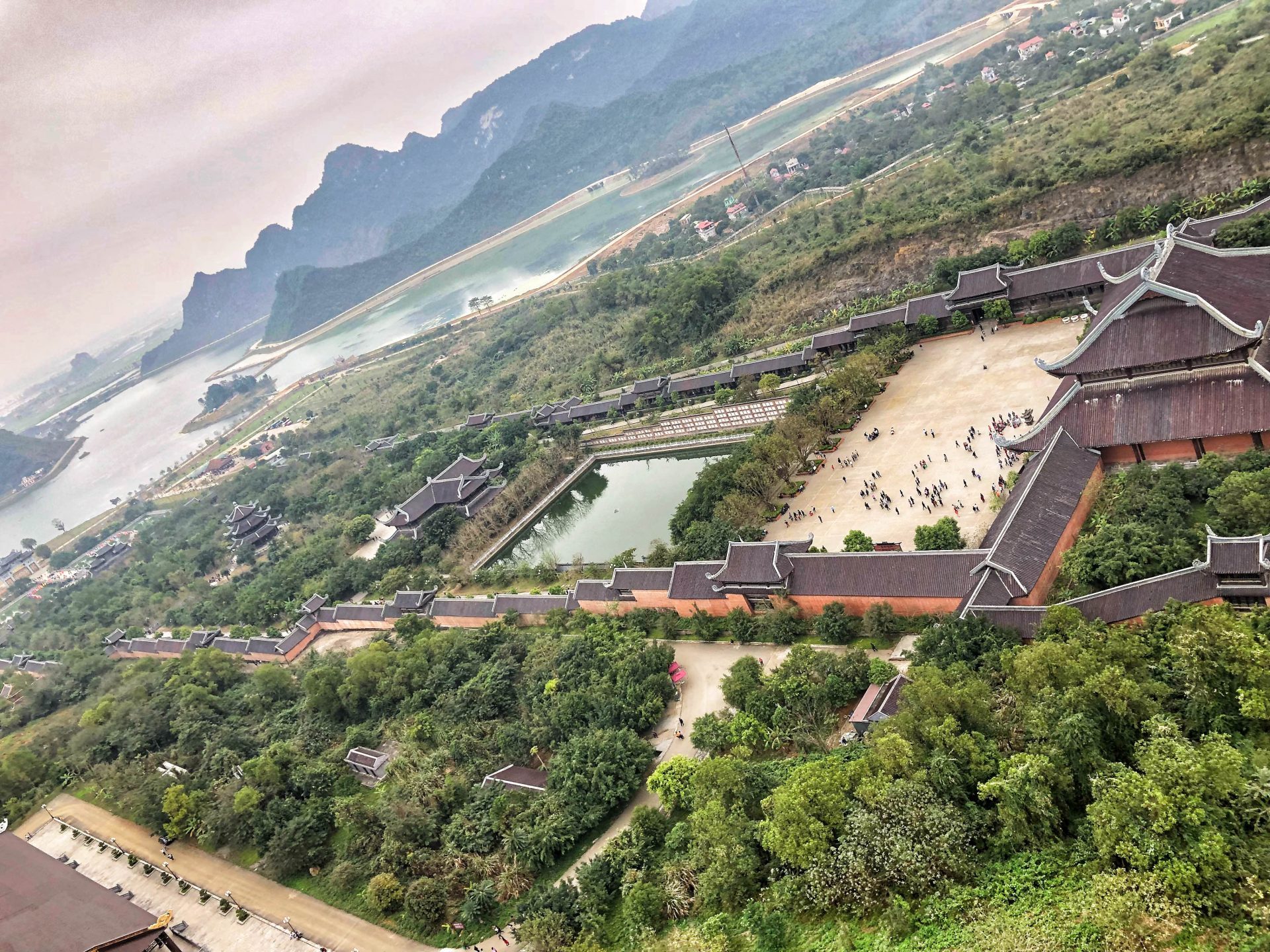
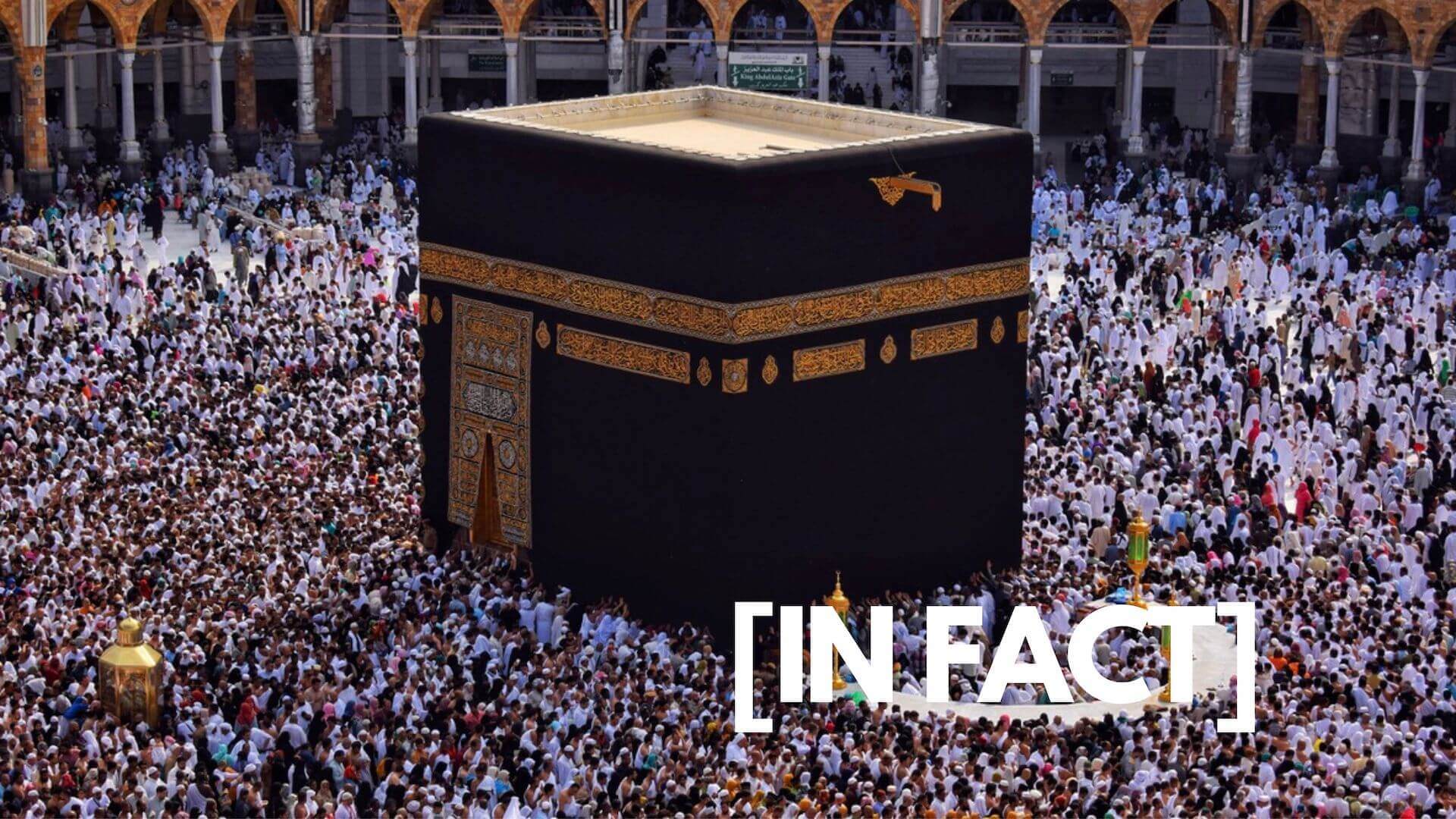
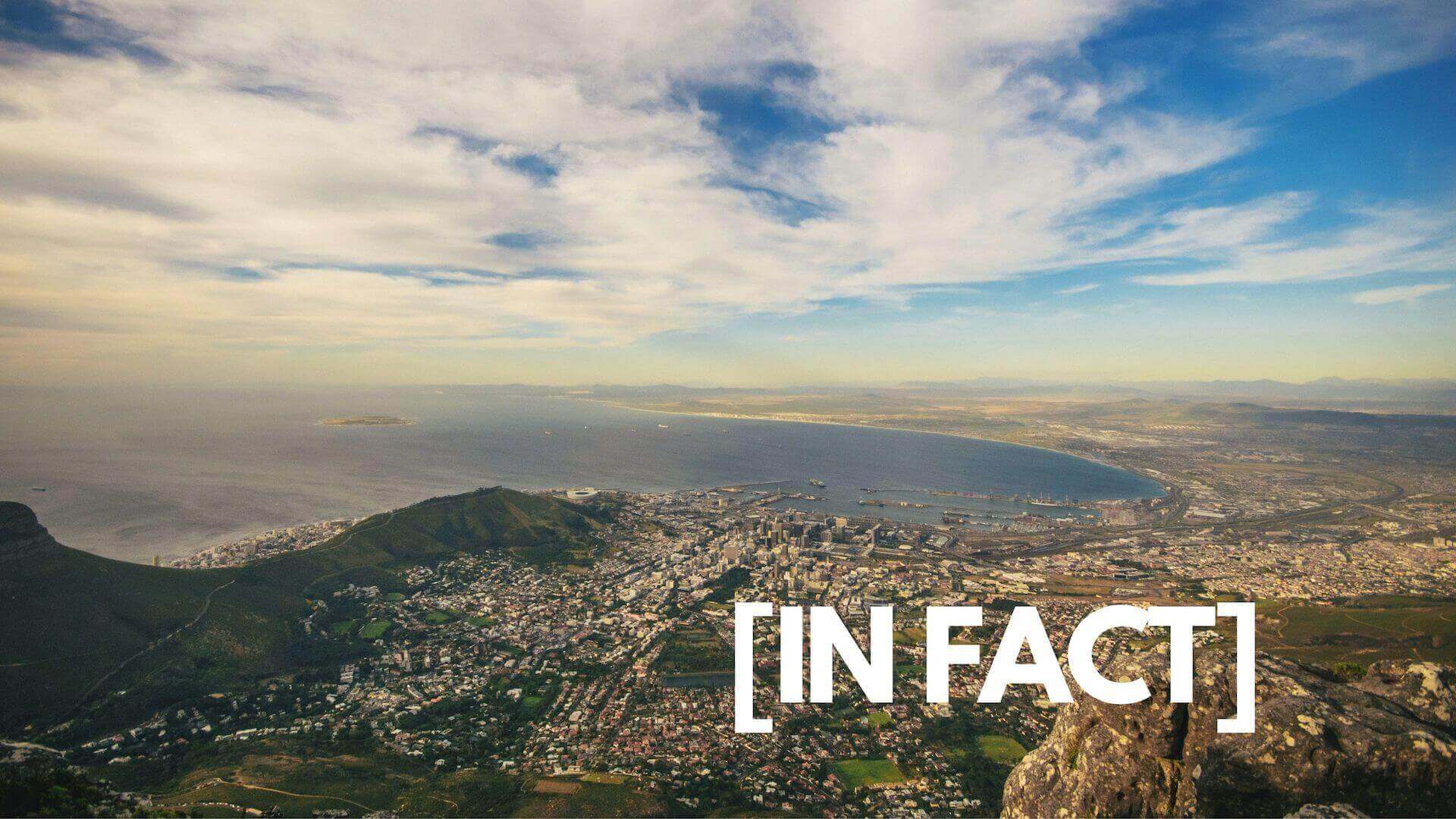
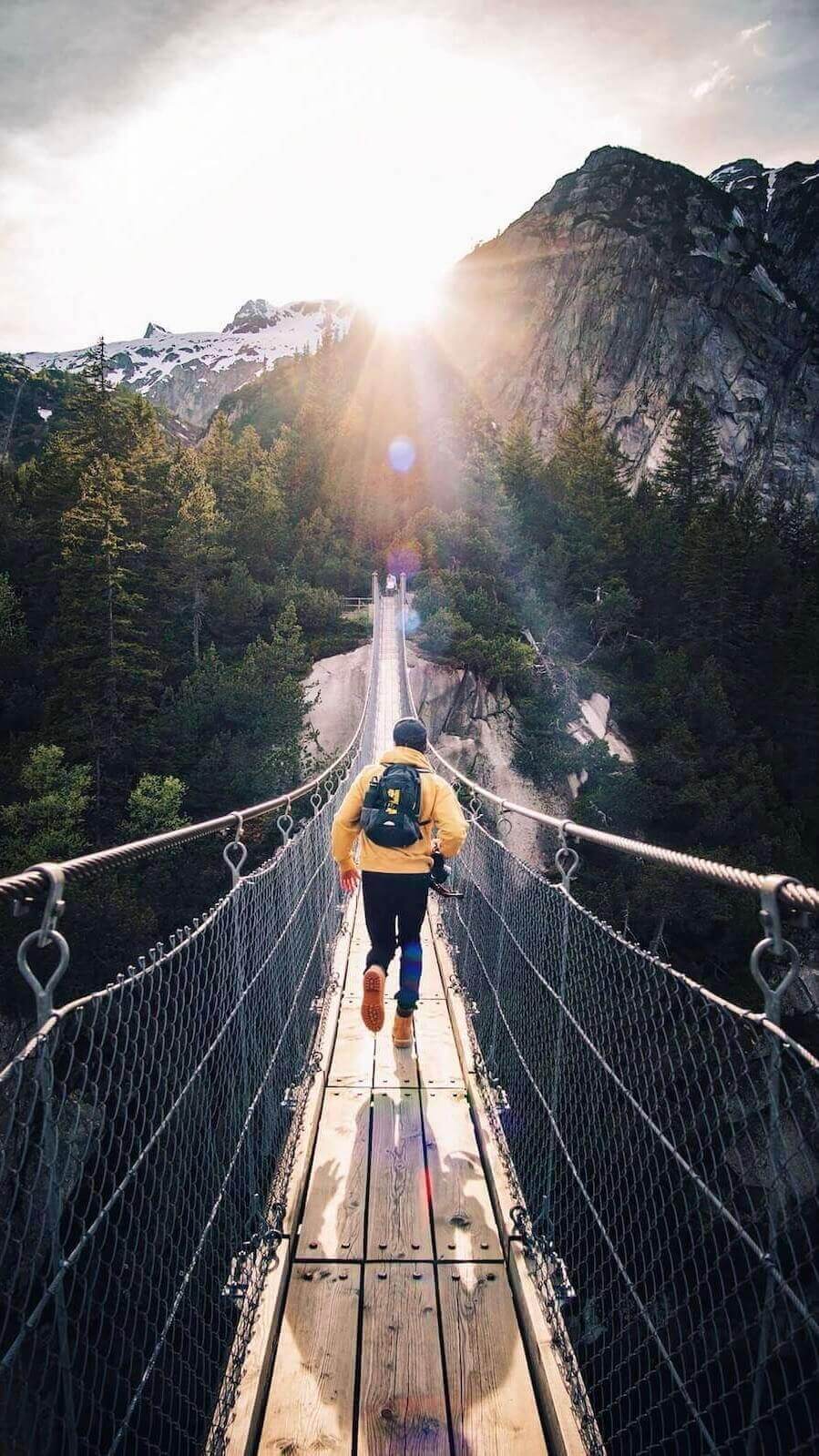
Kimberley
This is a great blog post for anyone who wants to visit Mexico. I’ve seen some Mayan ruins in Mexico in 2016. It leaves a great impression. Thanks for SHARING